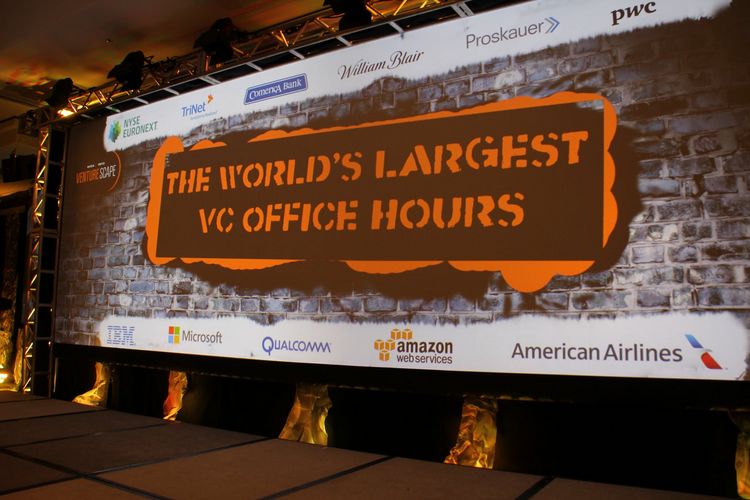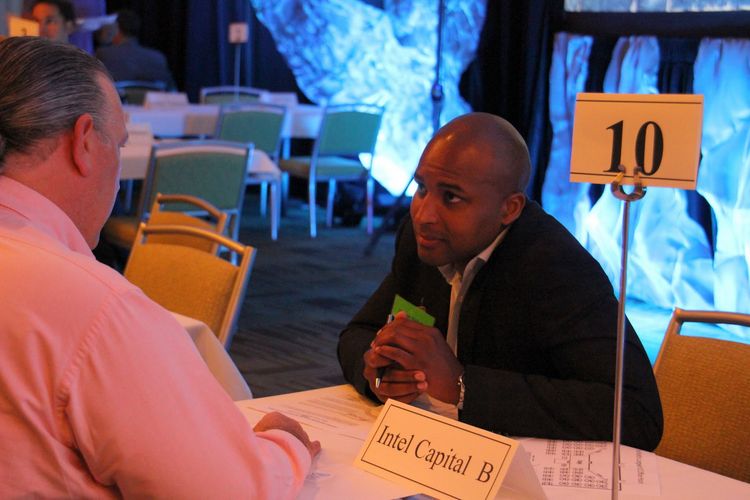IFR: Russian lending has been in the tens of billions this year and so far the market appears to hold up well. But can this continue?
Hasan Mustafa, RBS/ABN AMRO: When you talk about the volume and the supply side increasing dramatically over the last three or four months, one needs to keep in mind the fact that the bulk of that is on the short term. So these are bridges to acquisitions, they are bridges to bond issues or IPOs, which essentially means that if you divide the market between term and bridge financing then the bridges will outweigh the term side of the business. This has two implications. Firstly because these bridges are event driven, it is the borrower who is at a disadvantage in the sense they need the money and they need it at a certain point so their flexibility is limited. Lenders on the other hand, because of the volumes that are being raised often in similar sectors with similar credit stories, have been feeling the pinch because bridges generally do sell very well among retail investors. Retail lenders do not like to take refinancing risk as they are unlikely to share any of the refinancing economics. Because of the increased supply, pricing had to increase to accommodate these requests, and timing of these financings played a big part in pushing the pricing up.
I think the top tier banks present here have, to some extent, done their part in moving the pricing up. They need to make sure that if they are taking incremental exposure in Russia or CIS on a similar sector, or even if not a similar sector but large amounts, then they know that they will not be able to distribute in the retail, then the pricing needs to stack up to accommodate that incremental appetite.
In terms of the trends, my sense is that the trend will continue. There are strategic assets west of Russia and south of Russia that are becoming cheaper as economies around the world get into difficulties. If you have the balance sheet and can raise financing, then from a buying opportunity point of view, the timing could not be better.
So the trend in terms of increasing volumes is likely to stay, and the banks who are looking to do these short-term, short-end financings are being not only guided by higher pricing, but also by available ancillary business. Where previously, if you look six months ago, borrowers would take a slightly more aggressive stance and say, you commercial banks, you give us the money, investment banks will take the front role in the take-out story. But no longer. That “we cannot lend” card, which was being played by the IBs is no longer valid unless there is a serious issue where the bank cannot lend for reasons that we all know.
Benjamin Binetter, BNP Paribas: Banks are being a lot more choosy and can afford to be choosy as to which deals they wish to allocate their finite balance sheet. Indeed, of the things that we are seeing at the moment is a tendency for deals to proceed on a quasi-club basis, in a bid to minimise the amount of liquidity that has to be built up in the retail phase, knowing that those retail investors have a choice of deals, not just between deals in Russia and the CIS, but deals across the globe. That is certainly something that we have seen in the Asian market, which a lot of people have been talking up, and we have seen actually very little liquidity coming out of that markets, bar one or two exceptions that were deemed to be strategic by a few of those investors.
The banks that were once very active in the retail phase have now seen the market as providing an opportunity to move up a level, which is a gap that has been left by some banks that no longer have the ability to underwrite large amounts.
Banks will step up on the premise that as a core relationship lender they will get equal treatment on the ancillary business take-outs.
A year ago we could have more easily sold a deal to the market on a normal sub-underwriting process, with no MLA title, no ancillary business to be shared, but that is no longer the case. The banks that join at the top want to be treated in the same way.
IFR: Is a sub-underwriting phase still possible?
Hasan Mustafa: I think it still is possible, but generally a sub-underwrite is considered a stuffee position. Banks who generally would come in as a sub-underwriter now suddenly realise that with everybody else gone, they can step up and be a joint underwriter.
Going back on the retail appetite, I think that part of the issue with the retail investor appetite disappearing is the fact that the secondary pricing has widened considerably. For them, there is no relationship angle to any transaction. Another result of what was happening in 2007 – in terms of volumes – was that banks had to create room on their balance sheet and assets were trading at 96, 97 or 98 that were completed in primary at 99. As a retail investor the choice is, should I do a primary deal at 30 basis points upfront or shall I pick it up at 97 or 98?
James Nisbet, VTB Europe: Relative value is a key issue here. The retail market is now looking across all areas to see where they can pick up the best yields. Obviously with the state of the bond and derivatives market at the moment, quite often they can get better returns through other areas than going into a loan. At the moment the primary market is being driven by relationship issues. As a result of this we are going to see top arranging banks actually locking into the potential refinancings of these bridging loans and short-term facilities, as people anticipate reopening of the bond markets meaning these bridges will be taken out through the capital market. But we have not yet seen that recovery yet so banks are saying we will do this bridge loan or this short-term club deal, but we want to have a go at the refinancing, whether it is through the loan or bond markets, but we want the first go at doing that because we have supported you. Arrangers now are becoming much more savvy and are seeing the opportunities here that the loan can be used very much as a leader for the revival of the bond markets.
Benjamin Binetter: There is also a general push among banks that are active in Russia, to push the tenors out and push the model away from bridge loans to take the pain out of the refinancing. Last year there were a number of prominent examples of deals that had very ambitious take-out strategies that were mandated but did not materialise in the end. This only pushed the funding requirement to the syndicated loan market in 2008, which has also in part created a backlog of deals in a very difficult market, and the borrowers are having to pay the price for that.
So a lot of the discussions that are being had today, when these deals are put together, is also to see whether there is a way deals can be done long term from day one, with a view possibly to taking it out in capital markets at a later stage and refinancing it at a later stage.
IFR: A lot of the ability for borrowers to raise huge amounts in the loan market has been predicated on the bond market or different take-outs. Now with this avenue closed, is this going to start impeding borrowers ability to raise the type of big ticket financing that has been common this year? Are limits being stretched?
Hasan Mustafa: Heavy use of the loan market means pricing will just keep going up and up. Every time you have a new request, you are not looking at whether the last deal was 250 all-in or 300 all-in, you are wondering how much can we charge for this incremental hundred million dollars. If that is 500 all-in, then that is what it should be.
James Nisbet: You can almost see a convergence now of bond pricing because, at the end of the day, banks, if they are not lending or providing debt through the bond markets, they still have the capacity through the loan market. So they say we will do the loan, but we want the same or near bond economics through the loan. There is always a relationship element of loan pricing which you will not have in the bond markets, but they definitely will up the pressure, and the longer the bond markets remain closed or limited in capacity, perhaps the higher that convergence between bond and loan pricing will become.
This is what we saw before in the European leveraged market, with the development of derivatives and other instruments, and there needs to be a convergence and a proper assessment of the cost of capital. That is what clearly everybody is looking at the moment. Everybody has their own cost of funding increasing and capital is very limited, so whether it is a bond or a loan, I don’t think it makes a lot of difference at the moment. People are saying, what is the cost of our capital here? And that will dictate ultimately where pricing goes, and the only way at the moment is going to be upwards.
William Sharpe, Natixis: In terms of the appetite of the loan market, there are a number of natural constraints that you can point to. Certainly one of them is the size of a bank’s balance sheet, because obviously there is only so much of your balance sheet that you can lend to a specific borrower or group of borrowers, and there is also a finite country limit. So I think these things will limit how much borrowers can tap the loan market for.
There is also the question of normal credit metrics that banks look at when deciding whether or not to lend to a borrower, in terms of gearing and leverage, and a lot of these public Russian borrowers that have launched jumbo transactions this year are not that leveraged in terms of debt, but the leverage levels are going up. So I think some of these typical credit metrics will begin to come into play in terms of creating a limit, a ceiling, as to the appetite of loan markets.
Benjamin Binetter: Borrowers have been relying on the debt markets, be it bank or bonds, to raise their financing needs, and as their financing needs increase. They have substantial capital expenditure requirements, or in some cases they are making very aggressive acquisitions – and M&A activity certainly has increased substantially in Russia – their leverage overall in Russia is increasing to the highest level you would normally see for the corporate borrower.
There is certainly still a reluctance amongst many borrowers in Russia to look at the equity markets as a means to reduce the pressure on that front.
IFR: Why is that?
Benjamin Binetter: A lot of these companies are privately held companies with a few controlling shareholders that generally do not like to see their portion of the company, being diluted.
Hasan Mustafa: So far the cost of debt has been so cheap so why raise equity? Dilution in control is one key driver in that respect.
William Sharpe: There is also the issue of valuation. I have heard several discussions about, well, if this such-and-such company were to be introduced, what would be the appropriate valuation? Typically the owners who do not want to see themselves diluted are pretty bullish when it comes to putting a value on their assets.
Benjamin Binetter: Returning to point regarding pricing, moving or closing the gap with bond pricing, that is certainly something we are seeing on bridge loans where the intention is to refinance the loan through a capital market product. It is not something that we are seeing yet on longer term, three or five-year standard secured pre-export financing that we see in Russia. That still has to be built in. Gradually that is going to increase, but the shorter term unsecured deals have certainly been priced up.
Hasan Mustafa: There is an inverted yield curve right now where the short end is more expensive and borrowers to some extent are paying the price for asking for money at very short notice and in very large amounts. But if you look at the term side of it, these are the same borrowers who borrowed term funding at X basis points and now they are paying X plus 100 for a 12-month facility. Banks have learnt from the mistakes that were made in 2007 and 2006, where we were doling out cheap bridge financings, hoping that refinancing will happen. That lesson has been learnt. So the banks are now saying, if there is a bridge and if the take-out is the bond, then the bridge needs to be correlated to the bond side of it.
Benjamin Binetter: The fact that the few bridge loans in 2007 were priced to the entire economics of the transaction, which then did not materialise. Clearly that is an issue, because you block your balance sheet with substantial amounts that aren’t duly remunerated.
James Nisbet: It is difficult to hedge at the moment as well. In the past, the investment banks would hedge bridging loans via CDS markets, but the cost of that now is huge, even if there is a market there at all. So if you do a big bridge for Gazprom or something, in the past you might have just hedged it but that is no longer an option. So you can’t sell it in secondary, you can’t hedge it, you just have to sit it on your balance sheet. It is again a weighing up; is it worth actually putting the cost of capital into play on a $100m bridge, or doing something else that could actually get you a much better return and maybe get you league table status by arranging a few other deals? Again, you do not get any status for a bridge loan. It is just a bridge, it does not even get advertised. So what really is the value of bridges, particularly if you do not know what is going to be happening at the other end?
It is one thing if you know there is going to be a bond take-out or an IPO that you can make good money on, then that’s one thing, but in this market you simply do not know that. So it is all very open-ended, and I think that is what is causing concern with the bridge financing area.
IFR: So on pricing where does that leave us? Have we found a new level or is it going to continue to rise?
Christian Eberl, UniCredit Market & Investment Banking: I think it will continue. As Hasan said, just given the huge supply, I think just each transaction has to set the new pricing level for the transaction because you do not just see the credit and the structure itself, you have to benchmark it directly before launch of syndication with several of these deals coming to the markets at the right time because you have competing transactions in the market right now. Also borrowers, which may not be in imminent need to come to market as they do not have maturing loans for example within the next two or three months, are starting to get nervous saying okay, well, there is a big pipeline building up, should I start looking in trying to raise new funds and refinancing right now, because if the pricing trends goes up, then where will I be if I start refinancing something in three months’ time?
This is adding additional pressure. And let’s say, some borrowers are getting concerned about overall liquidity. We have heard that transactions are jumbo deals, which require big MLA clubs. All the MLAs have to take big chunks. So how long will this be sustainable if the retail market remains blocked as it is right now, which means just a small amount can be sold down. So many transactions are capped on MLA’s books.


